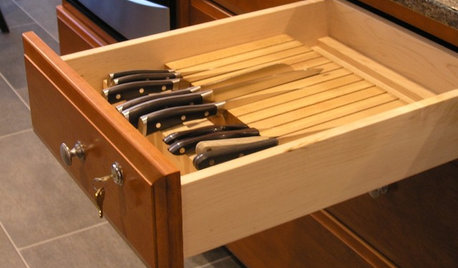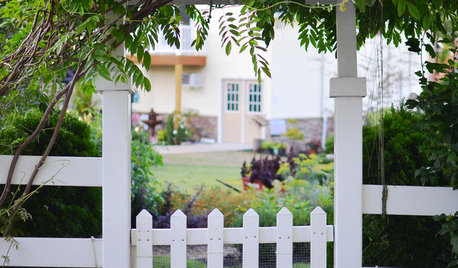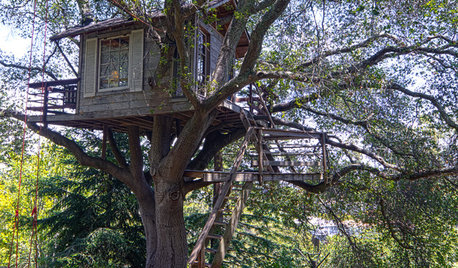Help - TN 'engineering' - to suspend a swing from a limb
hermitonthehill
17 years ago
Related Stories

REMODELING GUIDESFrom the Pros: 8 Reasons Kitchen Renovations Go Over Budget
We asked kitchen designers to tell us the most common budget-busters they see
Full Story
BATHROOM DESIGNSee the Clever Tricks That Opened Up This Master Bathroom
A recessed toilet paper holder and cabinets, diagonal large-format tiles, frameless glass and more helped maximize every inch of the space
Full Story
BUDGET DECORATING14 Ways to Make More Money at a Yard Sale — and Have Fun Too
Maximize profits and have a ball selling your old stuff, with these tips to help you plan, advertise and style your yard sale effectively
Full Story
EARTH DAYThe Case for Losing the Traditional Lawn
Work less, help the environment and foster connections by just saying no to typical turf
Full Story
DREAM SPACESA Northern California Tree House Makes Memories
Designed with utmost respect for the tree cradling it, a cozy house gives overnighters an experience to cherish
Full Story
KITCHEN DESIGNThrowback Kitchen Gains Countertop Space, Color and Smart Storage
Pullout pantries, sustainable hardwood cabinets and all-new appliances turned this kitchen into a showpiece for a Portland couple
Full Story
HOUZZ TOURSHouzz Tour: Just What Mom Wanted, Off the Washington Coast
With an art studio, age-in-place features and a view-maximizing design, this home shows just how well the architect knows his client
Full StoryGREEN BUILDING11 Reasons to Live in a House of Straw
Don’t be fooled by the old folk tale. Straw bales are a strong, functional and good-looking building material
Full Story
KITCHEN DESIGNTrending Now: 25 Kitchen Photos Houzzers Can’t Get Enough Of
Use the kitchens that have been added to the most ideabooks in the last few months to inspire your dream project
Full Story






brandon7 TN_zone7
brandon7 TN_zone7
Related Professionals
Ferndale Landscape Architects & Landscape Designers · Franconia Landscape Architects & Landscape Designers · Brookside Landscape Contractors · Berkley Landscape Contractors · Boca Raton Landscape Contractors · Forest Hills Landscape Contractors · Lewisville Landscape Contractors · Lynn Landscape Contractors · Roswell Landscape Contractors · Alafaya Solar Energy Systems · New Canaan Solar Energy Systems · Edison Roofing & Gutters · Fort Myers Roofing & Gutters · Greenwich Roofing & Gutters · Clarksville Roofing & GuttershermitonthehillOriginal Author
brandon7 TN_zone7
hermitonthehillOriginal Author
brandon7 TN_zone7